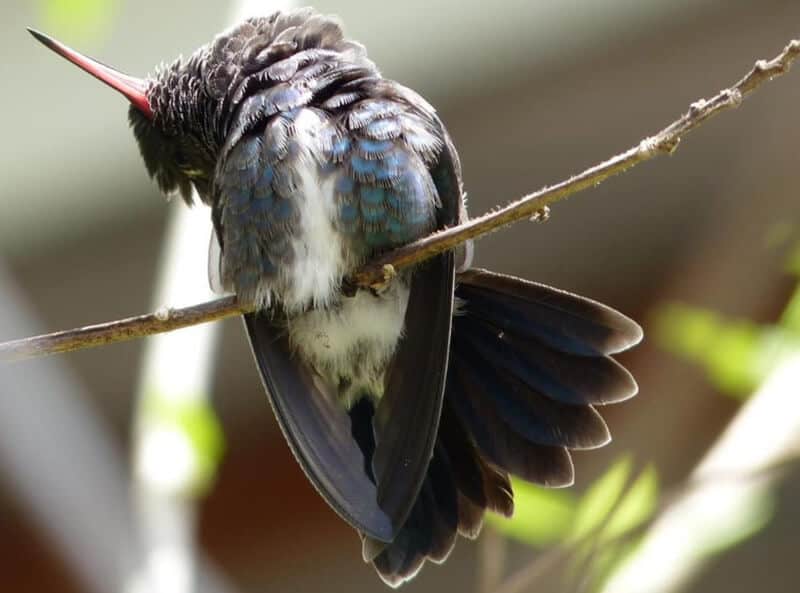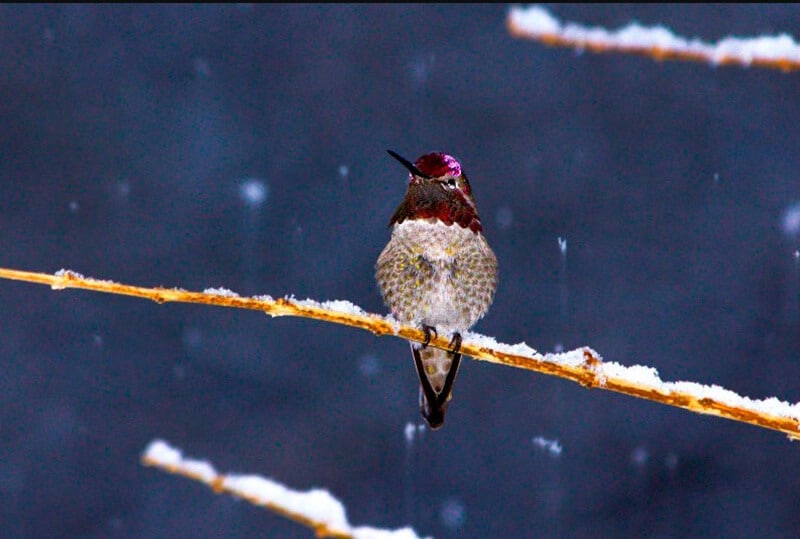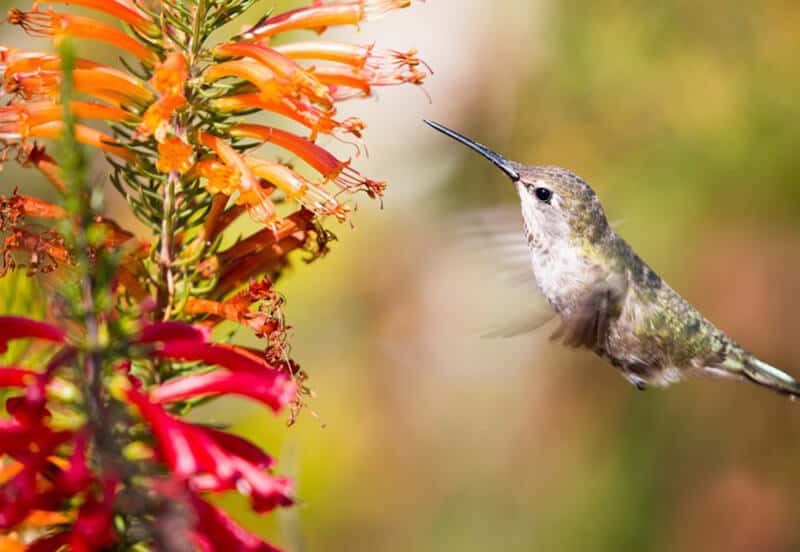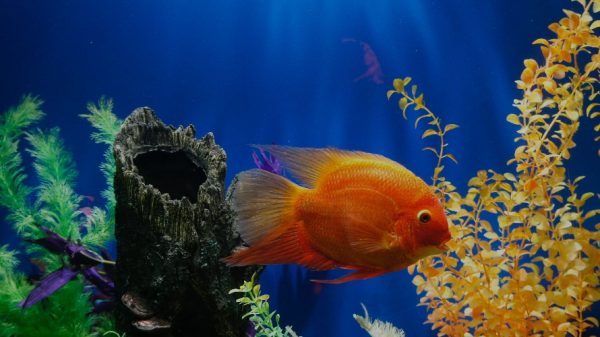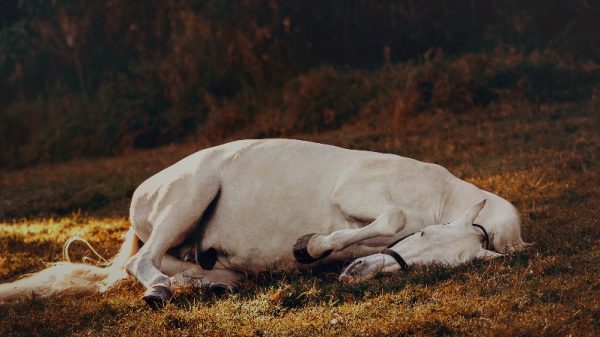Hummingbirds are truly among the very beautiful and amazing creatures in the entire world. But do you know what they do at night? We examine the life span of a hummingbird at night, what they do and why these actions are important for their survival. Keep reading Olly Sleep will help you to find out where do hummingbirds sleep.
The hummingbird’s day
Everything concerning the hummingbird utilizes energy so that they require a great and comfy night’s sleep to recuperate. They consume a large amount of energy throughout the day and need to feed a few times a day so that it’s not possible to allow them to sleep throughout the day.
Hummers are busy small birds and use up a great deal of energy by:
Flapping their wings at a really higher speed so large that they make humming sounds the birds are titles for.
Hovering while they consume, which is the majority of the day.
At dusk, they’ll begin to get ready for their night’s sleep, and they’ve invented a process of sleep that permits them to receive the best rest whilst using the minimum of electricity.
Are hummingbirds nocturnal or active at night?
Hummingbirds generally feed greatly in the daytime, the day hours, and start to settle in around half an hour or so before dark. But in a few places particularly if there’s artificial lighting like porch lighting hummingbirds might actually feed nicely in the night, typically during warmer weather. Hummingbirds do also fly during the night, however, this almost always occurs during migration.
Where Do Hummingbirds Sleep
Hummingbirds might decide to reside in warmer climates, but they could still endure some chilly nights. Their small size means they’re in danger from the chilly, so they’ve adapted a means of sleeping that helps them remain alive, although some unfortunate critters do really perish in chilly weather.
They feel when the night is coming and will begin to prepare themselves about half an hour prior to the daytime goes. This preparation takes time as hummers do not just sleep. They move into a state of torpor, which can be like being in hibernation. In reality, in the event that you saw one, you might be forgiven for believing it was lifeless.
A country of torpor
What about a hummingbird operates at a high rate, so when they sleep they slow down everything. In case their metabolism transported on working at this high rate while they slept, they would either consume too much energy have to keep stirring during the night.
Torpor slows their metabolism down so that they use less energy throughout the evening. In this sleep:
Their body temperature will fall so low they are nearly in a hypothermic state. They use a good deal of energy keeping heat, so this condition can help continue to the energy that they want.
While they’re alert their heart may beat at around 1200 beats per minute. While they’re in a state of torpor, this slows right down to only 50 beats per minute and it’ll almost look as though they’ve stopped breathing completely.
Their metabolism may fall to only 1 fifteenth of its regular pace, and this may enable them to save as much as 60 percent of the energy.
Throughout the condition of torpor, their throat is retracted and their feathers are fluffed out. They largely sleep on branches or around the nest, and it has been known to allow them to hang upside down. Should you find a hummingbird at night hanging or looking to breathe very slowly, leave it where it is. It will only maintain its condition of torpor obtaining a fantastic rest.
Torpor can also be a means for them to live on chilly nights. In hot climates that the temperature can fall through the night, also by lowering their particular temperature, hummers have developed a means to survive these temperatures.
When it is time for them to awaken, it may require them 20 minutes around one hour and it is during this period which you might hear them making small noises that some people today consider snoring since they begin to take in more oxygen.
They begin by boosting their pulse and taking in more oxygen.
When they’re breathing normally they’ll then seem to shiver. This really will help to heat them up and gets the blood flowing across their physique.
When they’re completely heated up and alert, the very first thing they do is feed to replenish their power.
Exceptions into the rule
There are, of course, always adheres to all of the rules with these small critters.
In certain areas where there might be plenty of unnatural lighting through the night, ie garden or porch lighting, the hummers can choose to keep on feeding late into the evening. This can only occur during warmer weather, however, since they’ll enter a country or torpor to maintain heat also.
During migration, a few hummers like the RubyThroated Hummingbird cross the Mexican Gulf. This flight takes them around 20 hours to finish and there’s nowhere for the hummers to break. They need to fly in 1 go in order that it’s not possible for them to sleep on this trip. Fishermen and oil men have reported visiting hummingbirds flying low over the water during the night throughout their migration. As soon as they reach the other side they’ll have a much-desired feed and relaxation.
How do hummingbirds endure cold winter nights?
Occasionally, for reasons which aren’t entirely clear, human birds stay behind for winter, and from time to time, they endure. Thus, as ordinary seasonal temperatures grow, hummingbirds are becoming recognized as year-round citizens out of their traditional ranges. Anna’s Hummingbird is just one species whose scope has expanded steadily northward as seasonal temperatures are very milder. Consequently, this bird is now a common year-round resident across the northeast shore of the USA and into a few areas of Canada.
Since most men and women are aware, hummingbirds feed on flower nectar, and it can be a tempting”gift” of high-energy sugars supplied by blossoms in exchange for pollination. Along with nectar, hummingbirds also consume large amounts of little insects, which can be filled with higher energy fats in addition to proteins that are essential. Due to their enormous metabolic conditions, hummingbirds have voracious appetites, equal to the typical human consuming a whole refrigerator filled with food, hummingbirds eat approximately 23 times their body fat in blossom nectar and small insects every day.
Apart from being one of the smallest of warm-blooded animals, hummingbirds also lack the insulating downy feathers which are common to many other bird species. Even sleeping hummingbirds have enormous metabolic requirements that have to be fulfilled simply to endure the night when it is impossible for them to forage. To fulfill this lively challenge, hummingbirds conserve enough energy to endure cold nights by lowering their inner thermostat at nighttime, getting hypothermic. This decreased physiological condition is an evolutionary adaptation that’s known as torpor. By doing this, a torpid hummingbird consumes around 50 times less energy than when alert.
Migration Throughout The Evening
While migrating, hummingbirds usually will soar throughout the day and sleep soundly at night. Whenever the RubyThroated Hummingbirds are flying across the Gulf of Mexico during spring and autumn migrations, there’s not any spot to land to maneuver, so it is apparent these hummingbirds have to invest at least a few of the time flying in the dark.
Rockport TX at dusk to venture across the Gulf of Mexico. This 500mile trip takes approximately 20 hours but flying nonstop across the Gulf of Mexico is an equally significant part of the normal selection process that’s made these small birds so hard, but sadly not all them pass this part of tests. Before leaving the territory, hummingbirds twice their weight by gorging to include fat as an energy reserve. Those which don’t include enough fat will not make their genes are not passed on.
Incidentally, The rufous hummingbird has the longest migration of any freshwater species. All these hummers fly over 3,000 miles away from their nesting grounds in Alaska and Canada to their winter habitat in Mexico.
Fun Facts About Hummingbirds
Interesting Hummingbird Trivia
From identifying physiological features to fascinating migration patterns, these facts will make you familiar with all the world’s tiniest creatures.
Physical Attributes
A hummingbird’s brilliant neck shade isn’t due to feather pigmentation, but instead by iridescence from the arrangement of these feathers. Moderate level, humidity, angle of watching, wear and tear, along with other factors all affect exactly how bright and vivid the neck may look.
Hummingbirds can’t walk or jump, though their toes may be utilized to scoot back while they’re perched. These birds have evolved smaller toes to be milder for flying. They’ll use their toes to get itching and itching, nevertheless.
Hummingbirds have 1,000 to 1,500 feathers, the maximum number of feathers of any bird species on the planet. Not only do they not need as many feathers due to their small size, but fewer feathers also keeps them longer lightweight for simpler flight.
Approximately 25 to 30 percent of a hummingbird’s fat is at its pectoral muscles. These are the wide chest muscles principally accountable for flying.
A typical hummingbird’s heartbeat is greater than 1,200 beats a minute. In comparison, a person’s typical heart rate is only 60 to 100 beats per minute at rest.
Hummingbirds don’t have any sense of smell but have very keen eyesight.
Diet
A hummingbird should consume about 1 half of its own weight in sugar every day, and the typical hummingbird packs five to eight times a week. Along with nectar, these birds also eat many tiny insects and spiders, and might also sip tree juice or sap out of fruits that are broken.
Hummingbirds don’t suck nectar through their long bills, and they lick it with fringed, forked tongues. Capillary activity along the fringe of the tongue helps draw up them in their throats so that they could consume.
A hummingbird can lick 10 to 15 times a second whilst consuming.
Hummingbirds digest organic sucrose the sugars found in floral nectar in 20 minutes with 97 percent efficiency for converting blood glucose into energy.
Species
Many hummingbird species, such as Anna’s, Black-chinned, Allen’s, Costa’s, rufous, calliope, and broad-tailed hummingbirds, can breed with each other to produce hybrid species. This is 1 factor that makes identifying hummingbirds quite hard.
The calliope hummingbird is the smallest bird species in North America and measures only 3 inches. The bee hummingbird is the smallest hummingbird species on the planet and measures 2.25 inches.
The typical ruby-throated hummingbird weighs 3 grams. In comparison, a nickel weighs 4.5 grams. It would take over 150 ruby-throated hummingbirds to weigh 1 pound.
The rufous hummingbird has the longest migration of any hummingbird species. All these hummers fly over 3,000 miles away from their nesting grounds in Alaska and Canada to their winter habitat in Mexico.
The bill of this aptly called sword billed hummingbird, located from the Andes Mountains, can hit around 4 inches, and it could be so significant that the birds could perch holding their invoices up.
These birds maintain the record for the maximum invoice relative to the general body dimensions.
Migration
There are over 325 unique hummingbird species on the planet. Just eight species regularly breed in the USA, though around two dozen species could stop by the state or be reported as ordinary vagrants. The remaining hummingbirds are mainly tropical species and don’t regularly migrate. They’re located in Central and South America in addition to the Caribbean.
A hummingbird’s greatest forward flight rate is 30 mph. These birds may attain up to 60 mph in a dip, and hummingbirds have numerous adaptations for flight.
A hummingbird’s wings beat between 50 and 200 flaps per minute based upon the direction of flight, the intent behind the flight, along with also the surrounding atmospheric conditions.
The ruby-throated hummingbird flies 500 miles nonstop across the Gulf of Mexico through its spring and autumn migrations. It’s a myth, but these very small birds”ride” on the rear of different creatures during migration they fly this space entirely by themselves.
The peak fall migration interval for hummingbirds is from mid-July during August or early September, depending upon the path and also the specific species. Species that nest farther north start migration before.
Miscellaneous
Hummingbirds lay the tiniest eggs of birds. Their eggs measure less than 1/2 inch but may represent up to 10 percent of their mother’s weight at the time that the eggs have been laid. A hummingbird egg is bigger than a jelly bean!
At rest, a hummingbird takes an average of 250 breaths each minute. Their breathing rate increases when they’re in flight.
Based upon the species, habitat requirements, predators, and other aspects, such as dangers to hummingbirds, the normal lifespan of a wild hummingbird is just three to 12 decades.
Despite their small dimensions, hummingbirds are among the most competitive bird species. They will frequently attack jays, crows, and hawks that infringe on their land. Backyard birders frequently find they have one dominant coriander which protects each of the claws, chasing away insects.

